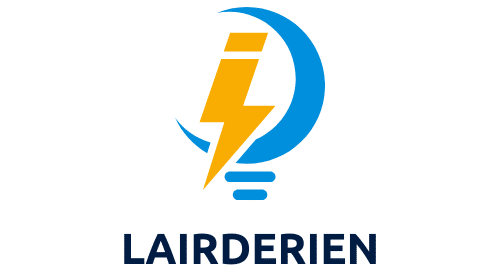In the realm of archaeology, the future is already here. Cutting-edge technology has become a mainstay in this field, where researchers are continually seeking new ways to gain insights into the past. Artificial intelligence (AI) is one such technology that is opening up possibilities for archaeologists in their quest to uncover hidden historical sites and artifacts. Machine learning, coupled with other technological advances such as lidar imaging, is transforming the way archaeologists approach their work, enabling them to find sites faster, more accurately, and with less damage to the environment.
The Marriage of Archaeology and Artificial Intelligence
At the intersection of archaeology and technology, AI is shining a fascinating new light on past civilizations. It’s a dynamic union that offers immense potential for the field of archaeology, significantly improving the performance of archaeological investigations.
A lire également : How Are Adaptive Traffic Control Systems Reducing Congestion in UK Cities?
Machine learning, a subset of AI, is of particular interest to archaeologists. In essence, machine learning involves teaching a computer system to improve its performance over time by feeding it data and allowing it to learn from it. In terms of archaeology, this data often takes the form of images or lidar scans from potential archaeological sites.
AI’s ability to sift through this data, learn from it, and identify patterns that might indicate the presence of an archaeological site is nothing short of revolutionary. It enables archaeologists to pinpoint potential sites with unprecedented accuracy, reducing the need for disruptive excavation and increasing the potential for successful finds.
Cela peut vous intéresser : What’s New in the Development of Organic Photovoltaic Cells for Transparent Solar Panels?
Unearthing Ancient Sites with Lidar Technology
Lidar (Light Detection and Ranging) technology, which uses light in the form of a pulsed laser to measure variable distances to the Earth, is taking center stage in archaeological expeditions. This technology, when coupled with AI, is proving to be a game-changer in the field of archaeology.
Lidar generates high-resolution 3D images of the terrain, penetrating even dense canopies of vegetation to reveal what lies beneath. These images provide archaeologists with an extraordinarily detailed view of potential archaeological sites, which were previously impossible to discern through traditional survey methods.
The real magic happens when these lidar images are combined with machine learning algorithms. The AI processes the vast amounts of lidar data, learning from it and identifying patterns that may suggest the presence of buried structures or artefacts. This technology-led method has already resulted in spectacular discoveries of previously unknown ancient sites, showcasing the potential of AI in archaeological investigations.
Enhancing Archaeological Data Analysis with AI
Data analysis is a crucial part of archaeological research. Archaeologists have long relied on manual techniques to analyse and interpret vast amounts of data gathered from site excavations. However, these techniques are time-consuming and prone to human error.
Enter AI. With its ability to process massive amounts of data at astonishing speed, AI presents a more efficient and accurate alternative. The AI algorithms can learn from the data, identifying patterns and making connections that might not be apparent to human researchers.
Furthermore, machine learning allows for continuous improvement in the analysis process. As the AI system is fed more data, it learns from it and fine-tunes its performance. This offers archaeologists a powerful tool for understanding and interpreting the historical and cultural significance of their finds.
The Impact of AI on Cultural Heritage Preservation
Preserving archaeological sites and artifacts is a significant aspect of cultural heritage preservation. However, many of these sites are under threat from natural disasters, climate change, and human activity. AI offers a potentially effective solution to this problem.
By analyzing data from a variety of sources, including lidar scans, satellite images, and historical records, AI can predict which sites are most at risk. This enables archaeologists and heritage professionals to prioritize their preservation efforts and act before it’s too late.
Moreover, the accuracy of AI can also reduce the need for invasive excavation, helping to preserve the integrity of archaeological sites. With AI, archaeologists can make informed decisions about where to dig and, importantly, where not to.
The Future of Archaeology in the Age of AI
As we look towards the future of archaeology in the era of AI, it is clear that these technological advances are not simply novel tools. They are, in fact, revolutionary changes that are reshaping the practice of archaeology.
AI is not replacing archaeologists, but rather providing them with sophisticated tools that enhance their work. It is making archaeology more efficient, accurate, and sustainable, offering new ways to uncover, document, and preserve our shared human history.
The potential of AI in archaeology is vast and largely untapped. As technology continues to advance and evolve, it will undoubtedly unlock even more possibilities for archaeological research and the preservation of our cultural heritage. The journey into our past, it seems, is being reimagined for the future.
Utilizing Remote Sensing Techniques in Archaeology
Remote sensing techniques, such as airborne lidar, have transformed the way archaeologists discover and analyze archaeological sites. Being a non-invasive method, remote sensing reduces potential harm to the sites while providing detailed data.
Airborne lidar is a remote sensing technology that uses lasers to measure distances. When deployed from an aircraft, these lasers can map the Earth’s surface in extraordinary detail. This technology is especially advantageous in areas where dense vegetation or challenging terrain make traditional surveying methods difficult or impossible.
But airborne lidar generates enormous amounts of data, which poses a challenge for archaeologists. Here’s where artificial intelligence comes in. Through machine learning algorithms, AI systems can sift through lidar data, recognizing patterns indicative of hidden archaeological structures. These patterns might involve things like unusual geographical formations or alignments of objects that are suggestive of human activity.
Moreover, AI powered remote sensing can be used to track changes in archaeological sites over time. This can provide valuable insights into how these sites are impacted by environmental factors, which in turn can inform preservation strategies.
In essence, the integration of AI with remote sensing technology is creating a powerful new paradigm in archaeology. It’s enabling archaeologists to detect archaeological sites that might have been missed with traditional techniques, and to do so in a way that is minimally invasive.
Unraveling the Past and Shaping the Future with AI
As we delve deeper into the potential of AI in archaeology, it’s evident that these tools are not merely enhancing existing methods but are creating new possibilities. AI, machine learning, and technologies like lidar are fundamentally changing how archaeological research is conducted and expanding our understanding of human history.
Artificial intelligence is not displacing archaeologists, but rather equipping them with advanced tools that augment their capabilities. It’s offering more precise, efficient, and sustainable means of uncovering, interpreting, and preserving our shared heritage.
Moreover, the use of AI in archaeology can have broader societal impacts. For instance, by revealing hidden archaeological sites and artifacts, AI can contribute to cultural understanding and education. Similarly, by predicting which sites are at risk, AI can play a crucial role in cultural heritage preservation.
Looking ahead, the future of archaeology appears vibrant in the age of AI. As technology continues to advance, there’s no doubt we will witness more groundbreaking archaeological discoveries powered by AI.
In conclusion, the marriage of archaeology and AI is an exciting development, one that promises to revolutionize the field. The journey into our past, enabled by these cutting-edge technologies, is indeed paving the way for an exciting future. AI and technologies like lidar are powerful tools in our quest to understand our history and preserve our cultural heritage. The future of archaeology in the age of AI appears full of possibilities and we are only just beginning to scratch the surface.






